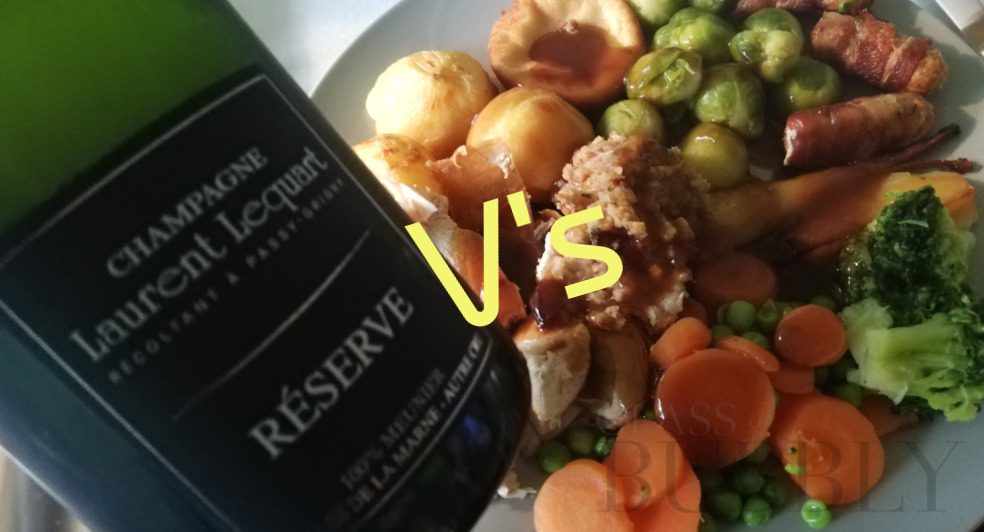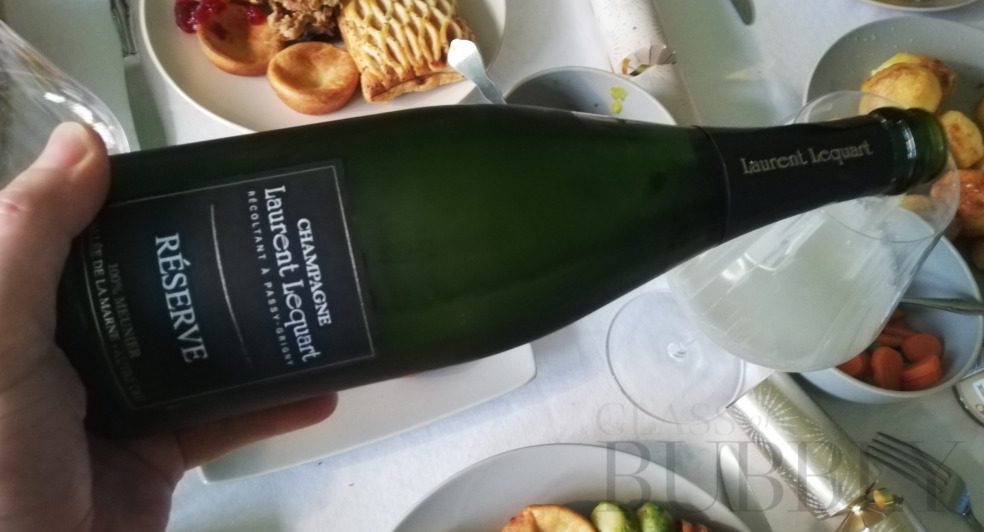English Roast Dinner vs Champagne
7th January 2022

England vs France and this time there isn’t a ball or a tackle to be seen, we are instead looking are culinary delights alongside what some see as the world’s most famous sparkling wine.
A short distance of just 20.7 miles separates these two famous countries (South Foreland to Cap Gris Nez) with the English Channel the line of defence in between. From the left side of the road to the right, from fry ups and tea to Croissant and coffee these two nations, though being close neighbours, are poles apart in many ways and we dare not even mention Brexit!
Through the years there have been countless wars between the countries especially towards claiming of land and many political disputes too. Though world wars saw them as allies and many will say the English came to the rescue of France during WWII, the friction remains present and comes out especially during sporting rivalry with Rugby seeing the main physical battle today – The Roast Beefs vs Les Frogs.
Even a search on Google for ‘reasons why the French and English hate each other’ brings up countless results, though a search for ‘positives between the English and French’ is quite dry with little amount of things to read and watch! Nonetheless, these two great countries provide the world with some great traditions and especially when it comes to those things to eat and drink.
English Roast Dinner
Roast beef holds a long history (King Henry VII reign) though the traditional English Sunday (or Christmas) Roast Dinner really dates back to 1920’s and though beef was the popular meat option initially we have stretched to chicken, turkey, pork, lamb with vegetarian and vegan options alongside accompanying roast potatoes, green veg and recently gravy.

Champagne is a great pairing for Christmas – Roast Dinners
Champagne
Champagne holds a similar grand history with Dom Pérignon (Benedictine monk) discovering the bubbles back in the 17th century. The industry grew from there with the major Champagne houses appearing in the 19th century and despite disruption of wars and vineyard diseases in between, there are around 5,000 producers of this famous sparkling wine today.
This wine is unique in that it comes only from a designated region of Northern France and comes via two fermentations (tank/barrel & bottle) and lays away in the cellars of the production houses for a minimum of 15 months before being sold.
Let battle commence:
- History – England – Roast Dinner came to prominence during the reign of King Henry VII in 1485. Champagne founded 1697
- Lowest Calories – France – A Champagne bottle contains approximately 622 calories. Roast dinner 800 – 1,200 calories.
- Most Economical – England – Average cost to dine out to enjoy a Roast Dinner is £14. Champagne bottle average £28 – £35.
- Popularity – France – Champagne is enjoyed in more countries and different by people with different cuisine styles. Roast dinners are mostly enjoyed by English speaking countries particularly in Australia, Canada, South Africa, the United States, and New Zealand.
- Styles – Joint – Champagne comes in different styles from sweetness to maturity along with white and rosé options. Roast dinners come with different options too from the meats to the vegetables, gravy or not and also condiment additions such as mustard, cranberry and horseradish sauces.
Decision is that both are equal and each offers something very different. Though they may finish joint on points with my very basic head to head battle, how to they pair together on the table?

English Roast Dinner
Roast Dinner paired with Champagne:
A traditional roast dinner and using chicken as the meat is a perfect pairing for Champagne and for me a 100% Meunier style. The heavy and sometimes greasy roast dinner (depending on who cooked it of course) calls out for a refreshing burst from a powerful wine at the table and nothing betters this than a quality Champagne.
We used a fine grower Champagne label for our wine – the 100% Meunier from Laurent Lequart. Tasting notes: “Chalky, red berry, nutty, peach aromas. Dry style. Citrus, peach, apricot, saline, red berry and more in flavours.”
Pairing notes: “The Champagne easily cuts through the heavy savoury flavours of the dish to deliver a clean and refreshing burst of chalky citrus in the palate. The combination of the two together works really well with the Champagne taking the more prominent position in that it easily pushes aside the greasy / fatty elements of the dish to leave subtle tender savoury flavours alongside all the delights from the wine. Perfect pairing.“
![]()
Christopher Walkey
Co-founder of Glass of Bubbly. Journalist and author focused on Champagne & Sparkling Wines and pairing them with foods.
